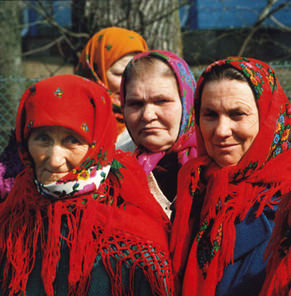Recent publications
Radiation Protection Aspects of Water Chemistry and Source-Term Management with a View of an ISOE Expert Group
- Details
- Category: Communications
- Published: Tuesday, 15 May 2012 13:00
ROCHER A., VAILLANT L., RANCHOUX G., OKYAR H.B.
Since 1992, the Information System on Occupational Exposure (ISOE, see www.isoe-network.net), which was launched by the OECD Nuclear Energy Agency (NEA), has provided a forum for radiation protection professionals from nuclear electricity utilities and national regulatory authorities worldwide to share dose management information and operational experience to improve the optimisation of worker radiological protection at nuclear power plants. Since 1993, the International Atomic Energy
Presentation at IRPA13, Glasgow, Scotland, 14-18 May 2012.
Abstract
Information System on Occupational Exposure (ISOE) provides a forum for radiation protection professionals from nuclear electricity utilities and national regulatory authorities worldwide to share dose management information and operational experience to improve the optimisation of worker radiological protection at nuclear power plants. The ISOE programme, with its participating utilities and regulatory authorities, is a key organisation in developing safe, sustainable and socially acceptable strategies for emerging issues in the field of occupational radiation protection.
Water chemistry approaches in different design of NPPs vary in results and consequences in terms of radiation protection performance. It was suggested that radiation protection aspects of primary system water chemistry and source-term management could be discussed in detail by the participation of ISOE utilities with an establishment of an expert group. The Expert Group on Water Chemistry and Source-Term Management (EGWC) has been mandated to address the experience of various ISOE utilities with various water chemistry regimes to explore if experience exchange could help to improve radiation protection performances. It is also necessary to note that water chemistry should not be viewed only from the context of radiation protection issues, but also from the context of operational and safety issues, and it was proposed to be grouped into a few of the most commonly used water chemistry approaches (e.g. zinc injection, pH control, iron injection, hydrogen water chemistry, etc.) to focus the exchange of experience discussions.
The expert group mainly focuses on the following topics:
- Description of strategies and techniques aiming to limit the level of activity in the primary coolant (prevention of contamination),
- Description of strategies and techniques for the decrease of activity build-up on the primary system surfaces or circuit decontamination (remediation of contamination);
- Performance indicators to assess results from the above strategies and techniques; measurement techniques and performance assessment (monitoring), and
- Management of iodine, xenon and alpha risks.
The outcome of the work will be a new ISOE publication, which is planned to include information and practical experience available in the nuclear industry on addressing operational aspects of primary water chemistry and source-term management of nuclear reactors with special emphasis on effects on effects of the management of occupational exposures, identify factors and aspects which play key roles in achieving good practices in water chemistry management and analysis on impact on worker doses and operational costs.
A1133

 CEPN is a non-profit organisation created in 1976 to establish a research and development centre in the fields of optimisation of radiological protection and comparison of health and environmental risks associated with energy systems.
CEPN is a non-profit organisation created in 1976 to establish a research and development centre in the fields of optimisation of radiological protection and comparison of health and environmental risks associated with energy systems.
